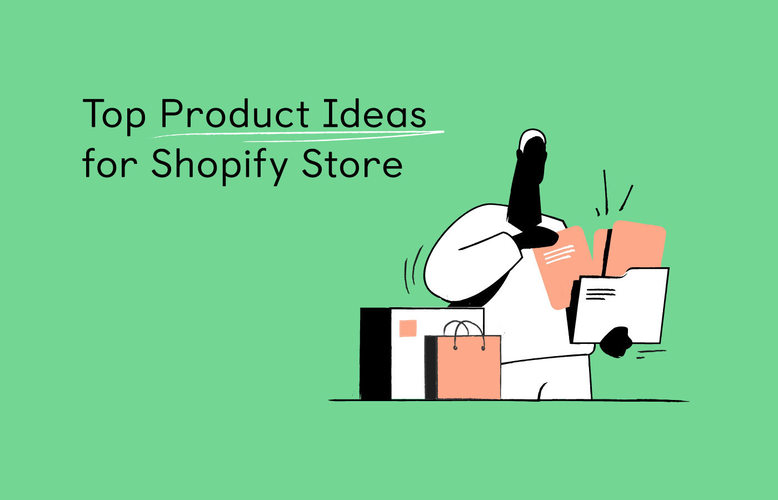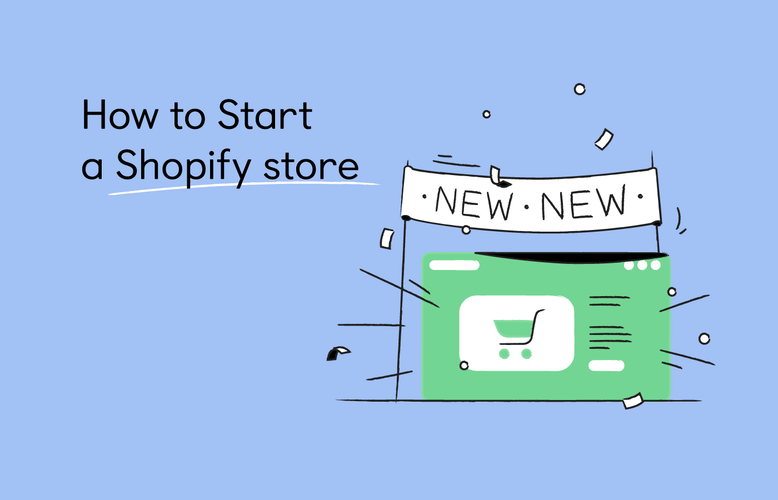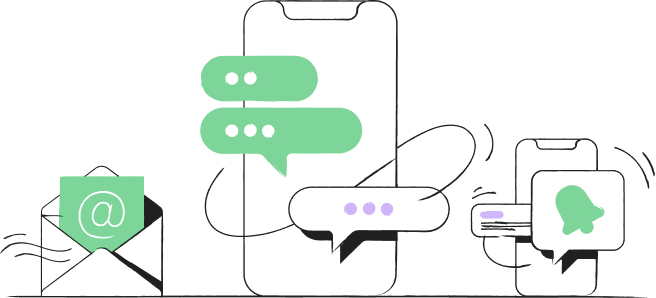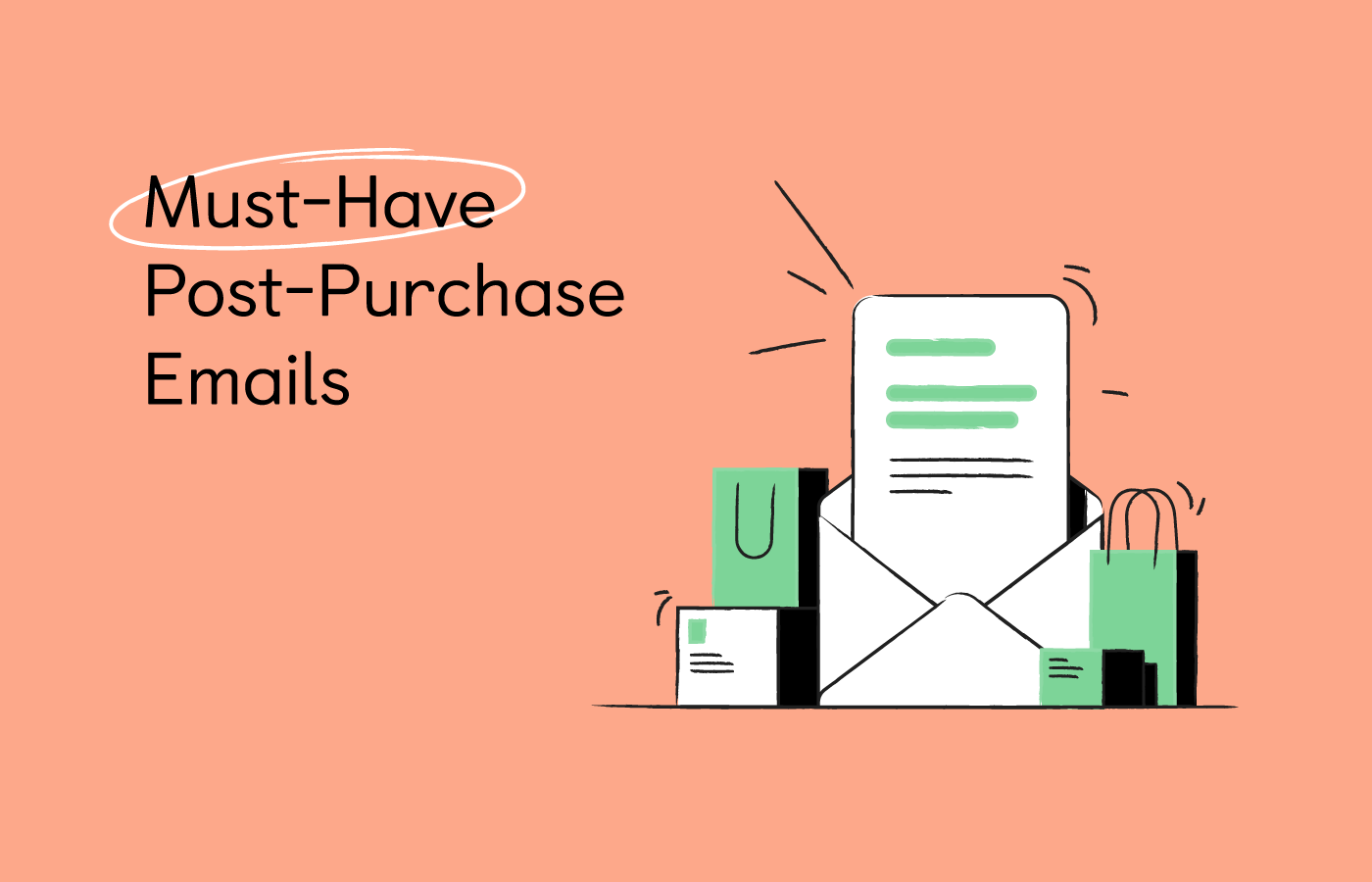
Navigation menu
Nailing your post purchase emails is the strategy to get that “low-hanging fruit'' to improve customer retention.
Below, we demonstrate with examples the most effective post-purchase emails that are sure to increase your revenue from repeat customers.
In this post:
Interested in email marketing? Check these guides later:
- Best Email Marketing Apps for Shopify
- 15 Email Marketing Examples for Inspiration
- How to Send Ecommerce Emails without Spamming
Why It’s Important to Send Post-Purchase Emails
Post-purchase emails are a way for ecommerce businesses to keep customers engaged, interested, and buying more. A survey by ConversionXL reveals these metrics of post-purchase emails:
- Open rate is 40.5% (over 50% higher than in promotional emails)
- Click-through rate is 6.4%
- Conversion rate is 0.7%
Perfecting the post-purchase email sequence enables brands to engage better with customers and encourage them to make repeat purchases.
Along with loading your post-purchase email with value, getting the timing right is crucial. The following image lists the best time to send relevant post-purchase updates to your customers.
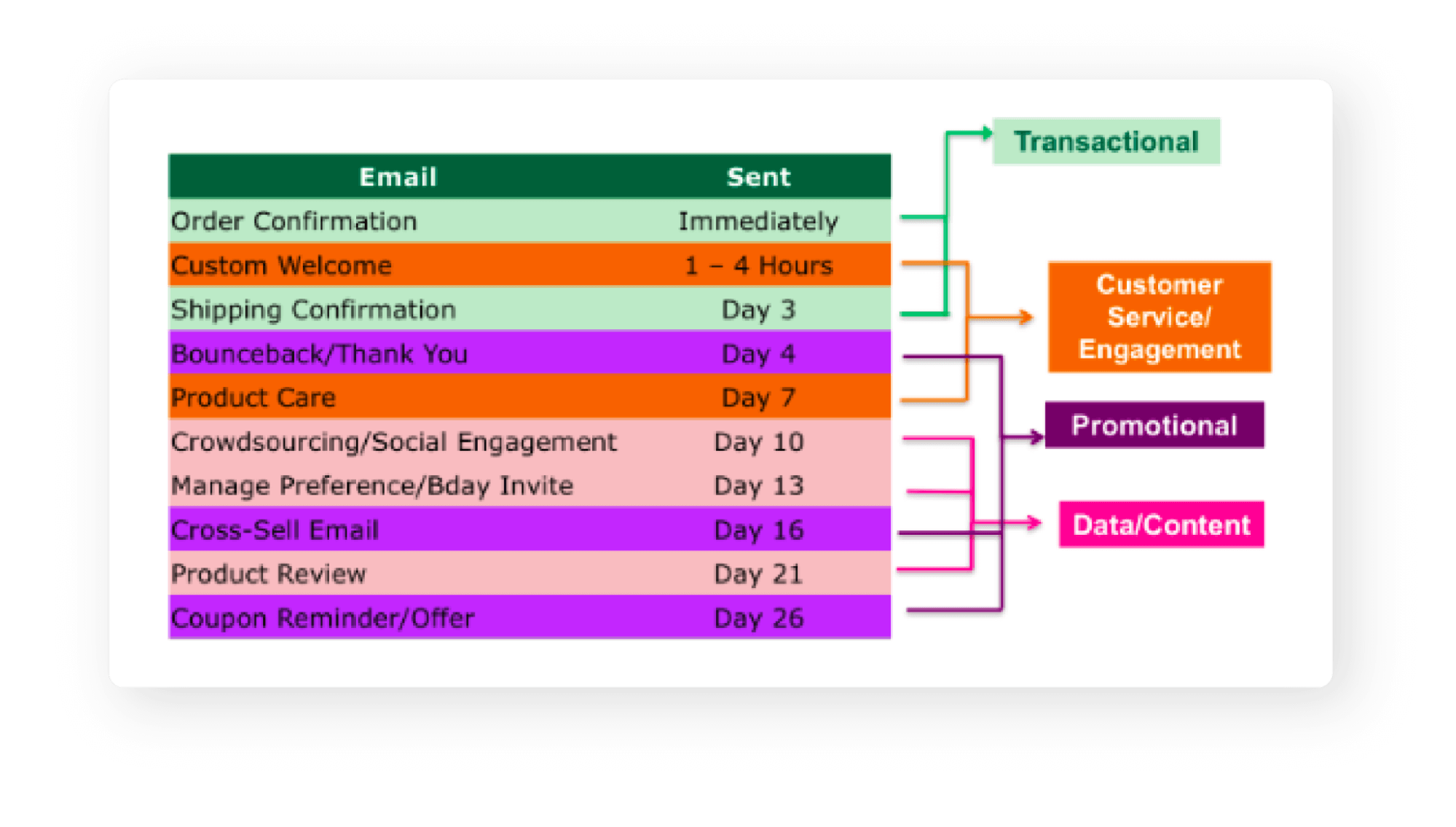
Examples of Post-purchase Emails
Now, let’s see the examples of emails you can send to customers.
1. Order Confirmation
This is your first email to customers as a confirmation soon after they place an order. When customers hit the “Buy” button, they are keen to know if the transaction worked perfectly. They are anxious, skeptical and on the brink of remorse.
Make sure you send the order confirmation email right away. Most importantly, make them feel good about their purchase.
Research suggests that the average open rate of order confirmation emails is 114.30%. This rate is almost eight times higher than promos with 14.40%.

Also, Experian’s report shows that the revenue generation of order confirmation emails is nearly $0.75 per email. On the other hand, regular emails generate somewhere around $0.13 per email. It means order confirmation emails generate almost six times higher ROI.
Okay, let’s now see examples of post-purchase emails.
Soon after customers place an order on Solestruck, they receive this email.
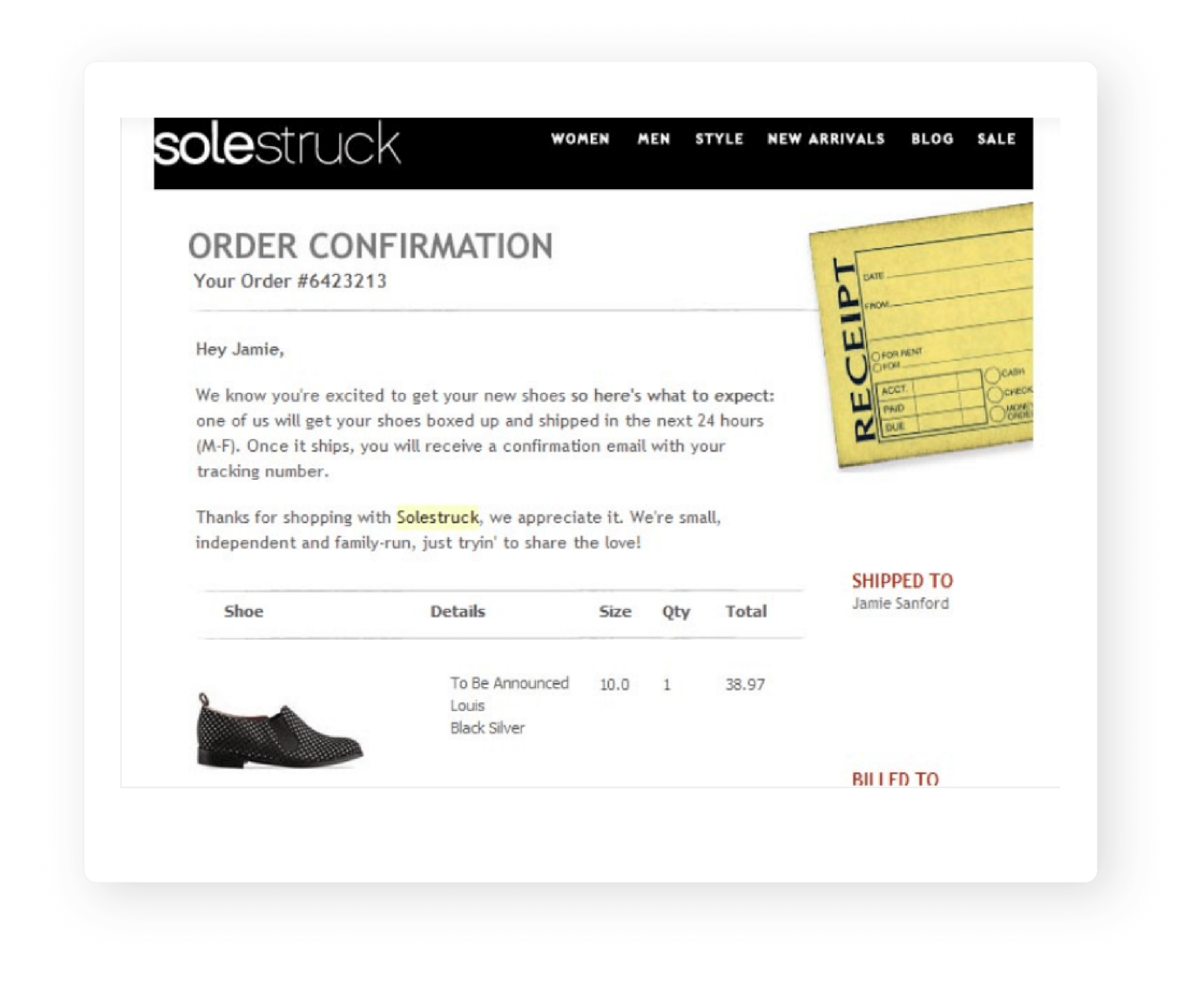
In another order confirmation email example, Parabo confirms the customer’s order, and mentions a link to track the package.

2. Shipping Confirmation Email
By sending shipping confirmation emails, you can update customers on their order status, dispel their anxiety, and build trust.
After placing an order, you would want confirmation with all the necessary details, including your payment and the item you ordered.
It is easy to confuse shipping confirmation emails with receipt emails, as both are sent at separate times. For clarity, you send a receipt email before sending out shipping confirmation in the buyer’s journey.
In a shipping confirmation email, you should ideally send a link to the tracking number to give customers what they want to check their order status.
In the following example, Sephora confirms shipping to the customer, along with the order number, item detail, shipping status, shipping method, and a “Track Your Order” button. At the bottom, Sephora also mentions that the customer can return the item for free.
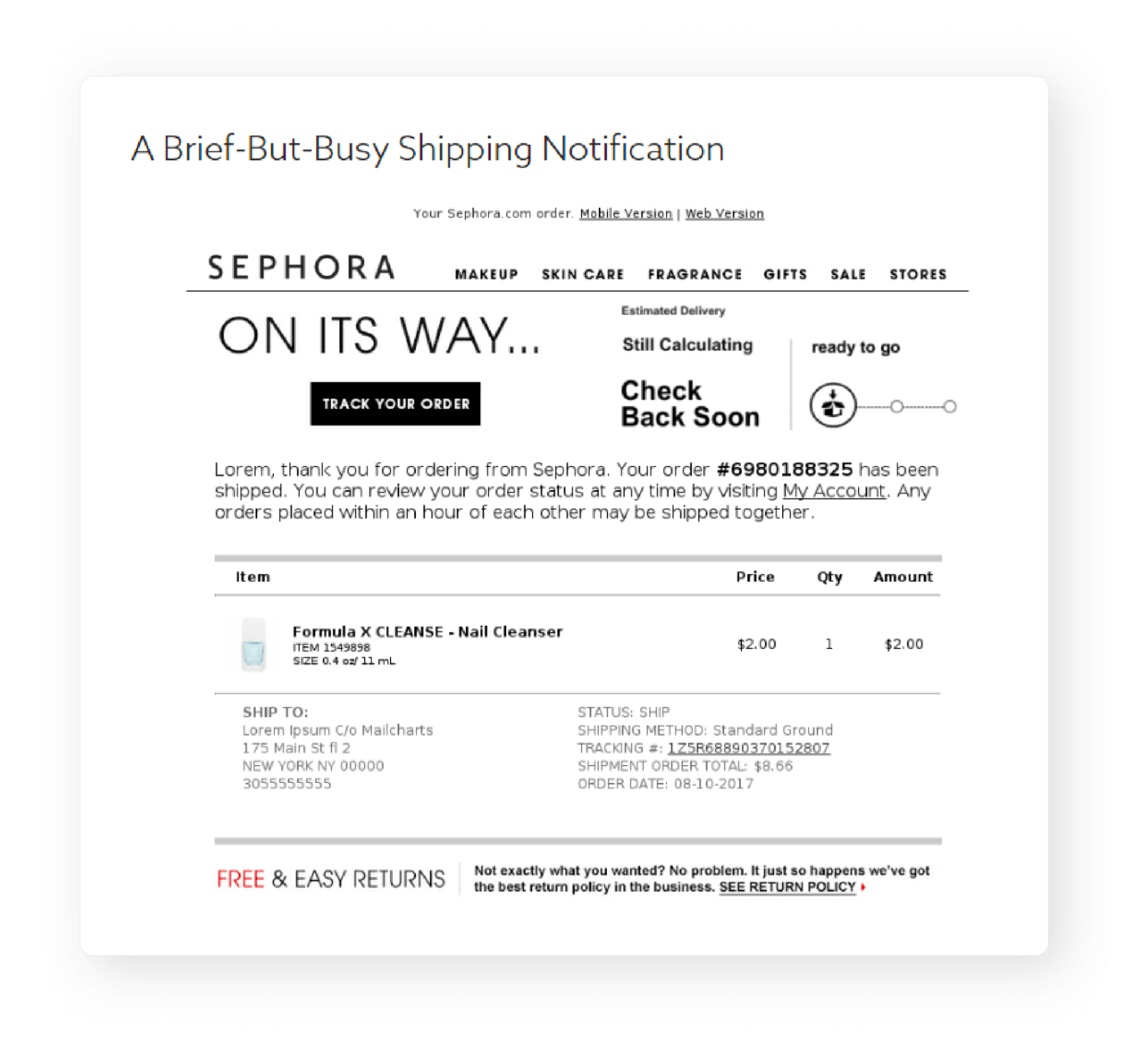
Free shipping can encourage customers to buy without hurting your revenues. Learn more: How to Use Free Shipping to Increase Sales.
3. Thank-you Email
After your customers receive their order, sending them a thank-you email for their purchase is a nice gesture.
A simple “Thank you” message creates a feel-good factor among customers and paves the way for a long-term association with them.
A study by Remarkety shows that on average, thank-you emails have a 42.51% open rate, 18.27% click-through rate (CTR), and 10.34% conversion rate (CVR). It confirms that thank-you emails have higher open rates and click rates than most other emails.
Example:
Macy’s uses a thank you email to make customers feel special. They use this message as an opportunity to encourage the customer to write a review. To make the review writing fun, the brand adds that the customer can win a gift worth $1,000 for the effort.
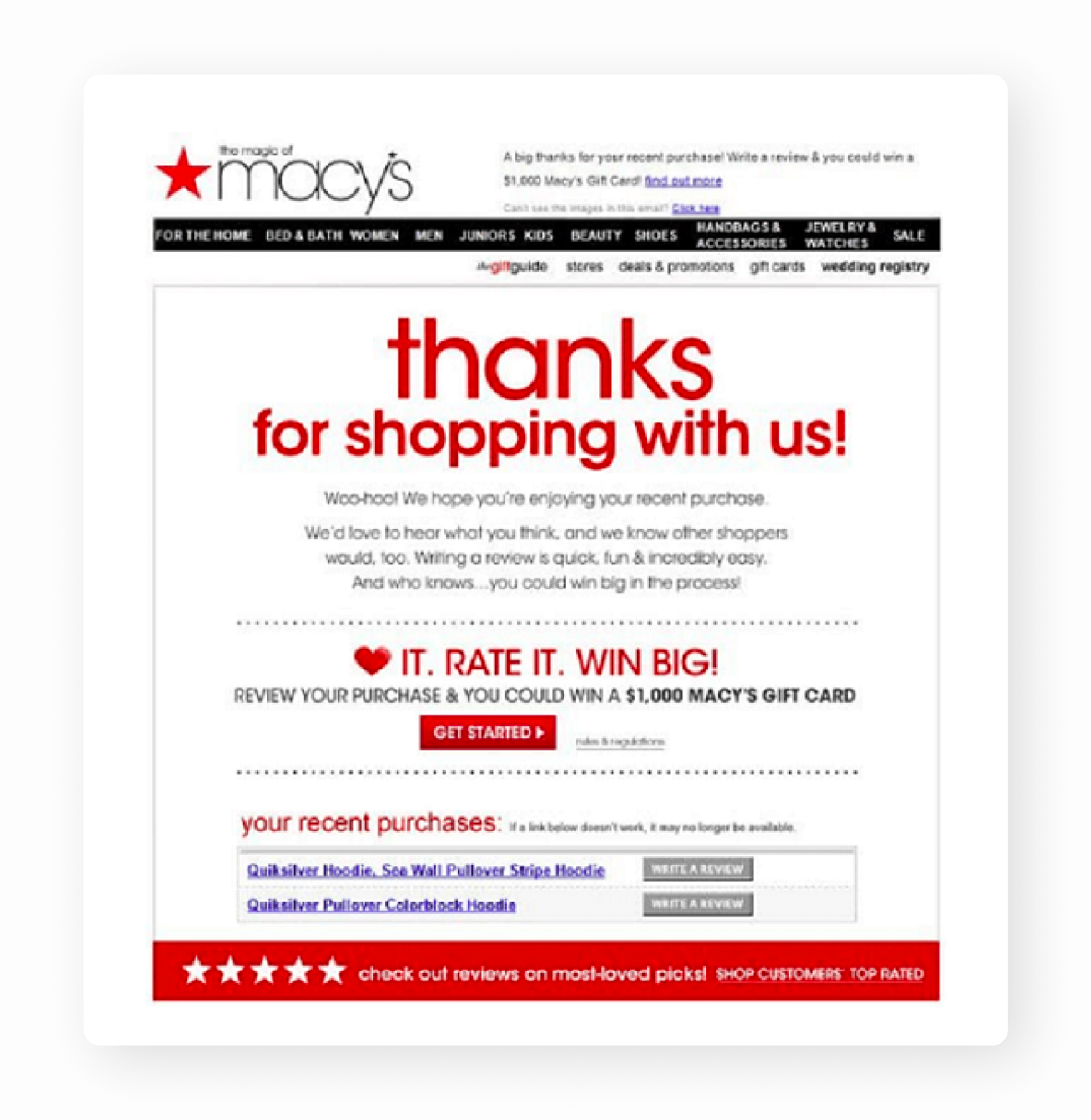
4. Back in Stock Email
Whenever items go out-of-stock, customers feel frustrated. Back-in-stock email can help them still get they products they wanted.
Back-in-stock emails provide an excellent opportunity to turn an unpleasant experience into a delightful one. Doing it the right way can help e-commerce businesses recover their revenue losses, engage customers, and deliver memorable customer experiences.
According to Retail Dive, both traditional and online retailers lose up to $1 trillion due to their out-of-stock situation. This is why back-in-stock email alerts can work effectively to close the gap by retargeting online visitors who have shown interest in out-of-stock products.
An example of such an email from Esquido.

An electronics store used push notifications to let customers know about products arriving back in stock. Results: a 22% open rate and a 16% conversion rate. More details here: Phaser FPV Case Study
5. Birthday Email
Birthdays are not only special occasions to celebrate with family and friends, they also give brands a golden opportunity to carve a special place in their customers’ minds with personalized birthday emails.
Some send emails including discounts or freebies, and others send a personal message wishing customers a happy birthday.
The example below, Spalding sent a personalized email with a 20% discount coupon. This email is a good example of a brand that follows this great practice of encouraging buying.
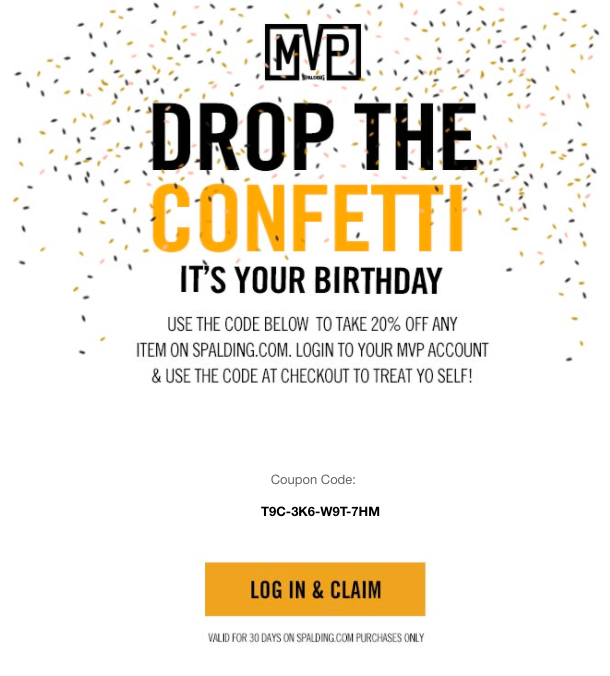
Want to know how to use different kinds of discounts to encourage sales? This guide on How to Create Discount Codes for Shopify Stores should help.
Conclusion
Post-purchase emails are still largely underrated and can turn out to be a powerful tool in your digital marketing efforts. They can significantly increase customer engagement, boost your revenue, and lower your overall marketing expenses.
Customer retention should be one of the top goals of your digital marketing strategy. Encouraging customers to come back to your online store can fuel its growth process. By creating attractive and personalized post-purchase emails, you can nurture your relationship with customers. This way, your brand can become an integral part of the customers’ journey, turning them into loyal patrons in the process.


